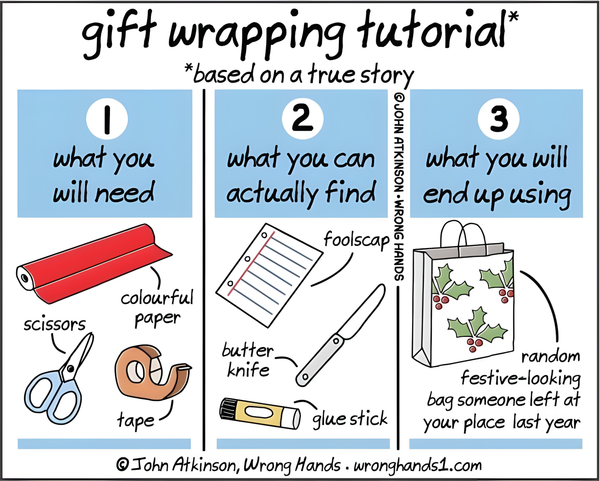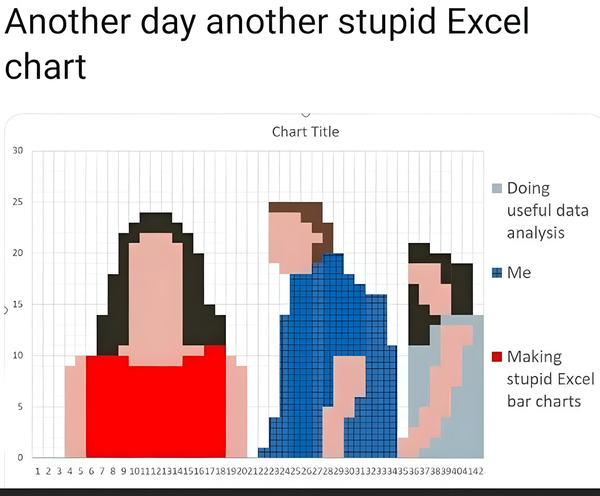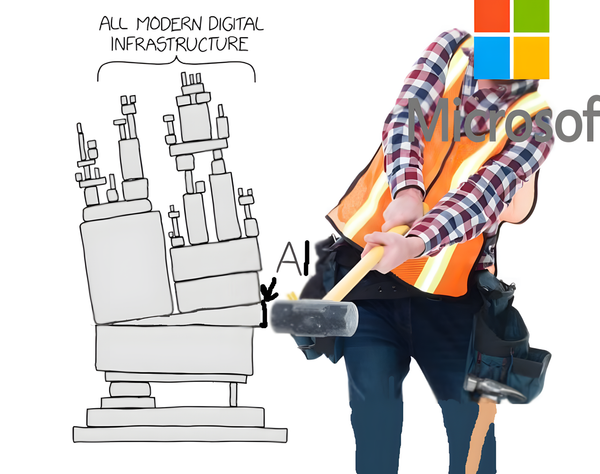The Managers' Guide #105

The hardest problem in computer science is getting someone to clearly describe a problem
Tying yourself to the mast
How to keep commitments
- ⛵️ The Ulysses Pact — The central idea is the “Ulysses Pact” or commitment device — a strategy where your present self makes a choice that intentionally limits the options of your future self to protect them from temptation, just as Odysseus tied himself to the mast to resist the Sirens.
- 🤔 Your Future Self is a Stranger — We often fail at long-term goals because we treat our future self like a “stranger.” We lack empathy for them, leading us to prioritize immediate gratification over their well-being — a concept known as hyperbolic discounting.
- 📱 Modern Commitment Devices — This ancient strategy is highly relevant today. Modern examples include using apps like Freedom to block distracting websites, setting up automatic savings transfers, or telling friends about a goal to create social accountability.
- 🧠 A Tool of Wisdom, Not Weakness — Binding your own hands isn’t a sign of poor willpower. Instead, it’s a form of wisdom — an acknowledgement of our predictable irrationality and a practical way to design our environment for success. It’s a “dialogue between your present and future selves.”
How to improve your WFH lighting to reduce eye strain
- An even, diffused lighting environment is best for the eyes
- When it comes to light brightness, too much is just as problematic as too little
- Use natural light wherever possible
- Quality of artificial light matters
- The best lighting for camera, is not necessarily the best lighting for ergonomics
- Even the perfect lighting environment will fatigue you — take breaks, and take care of yourself
How do interruptions impact different software engineering activities?
- 💥 The High Cost of Context Switching
- An interruption is far more costly than just the time it takes. Research shows it can take a developer anywhere from 10 to 25 minutes to get back into a state of productive “flow” after being distracted from a complex task.
- 📉 The Domino Effect of Distractions
- Interruptions don't just delay work; they can derail it completely. After being interrupted, developers often switch to easier, lower-value tasks (like checking email) because the mental effort to reload the previous complex problem is too high.
- 🎯 Protecting the “Flow State”
- The article emphasizes that developer productivity is not linear — it depends on achieving a deep mental “flow state.” This state is fragile and is the primary victim of even minor interruptions.
- 🛡️ Practical Defense Strategies
- To mitigate this, the article suggests proactive strategies like blocking out “focus time” on calendars, embracing asynchronous communication over instant messaging, and creating team norms about when it’s acceptable to interrupt someone — especially avoiding it during coding and debugging.
A Field Guide to Team Dynamics and Conflict
- 🤝 The Satir Interaction Model
- The article introduces Virginia Satir’s powerful model for understanding how people communicate under stress. It provides a simple yet effective framework for decoding team dynamics during conflict.
- 🎭 Four Dysfunctional Coping Stances
- It identifies four common, unhealthy ways people react to perceived threats: “Placating” (always agreeing), “Blaming” (deflecting fault), “Super-Reasonable” (relying on pure, emotionless logic), and “Irrelevant” (distracting with non-sequiturs).
- ✅ The Goal of Congruence
- The ideal and only truly functional communication style is “Congruence.” This is when your words, body language, and inner feelings are all aligned — a state of genuine and honest interaction that builds trust.
- 🧭 A Practical “Field Guide”
- The key learning is that this model is not just theoretical. By learning to recognize these stances in ourselves and our teammates, we can consciously shift away from reactive, defensive patterns and choose a more constructive, “Congruent” response to conflict.
Stop the (Goal) Cascade Madness
- ⏬ The Flawed “Goal Cascade”
- The article critiques the traditional top-down approach where company objectives are mechanically broken down into smaller, dependent goals for each team, a process often associated with frameworks like OKRs.
- ⚙️ From Problem-Solvers to “Feature Factories”
- This cascade strips away crucial context. Teams lose the “why” behind their work and are reduced to executing pre-defined outputs, rather than using their expertise to solve real problems and achieve meaningful outcomes.
- ⚓️ Slow, Rigid, and Fragile
- The system is incredibly slow to create and adjust. It creates a fragile plan that can't adapt to new information, leaving teams tied to outdated objectives while the market or customer needs have already shifted.
- 🧭 Cascade Context, Not Control
- The proposed solution is to stop cascading specific goals. Instead, leaders should cascade strategy, intent, and high-level context, empowering autonomous teams to define their own work in a way that contributes to the larger mission.
That’s all for this week’s edition
I hope you liked it, and you’ve learned something — if you did, don’t forget to give a thumbs-up, add your thoughts as comments, and share this issue with your friends and network.
See you all next week 👋
Oh, and if someone forwarded this email to you, sign up if you found it useful 👇



